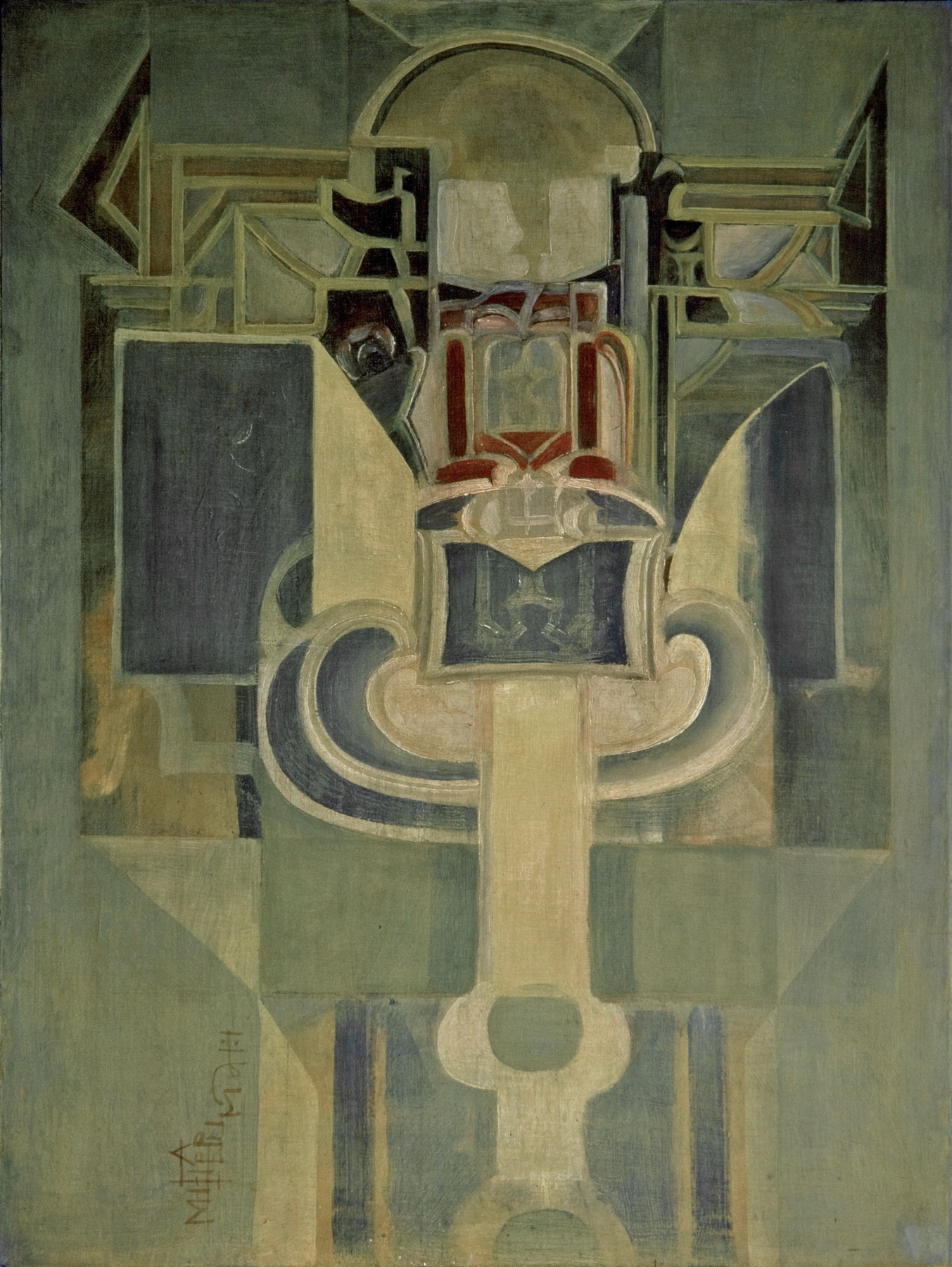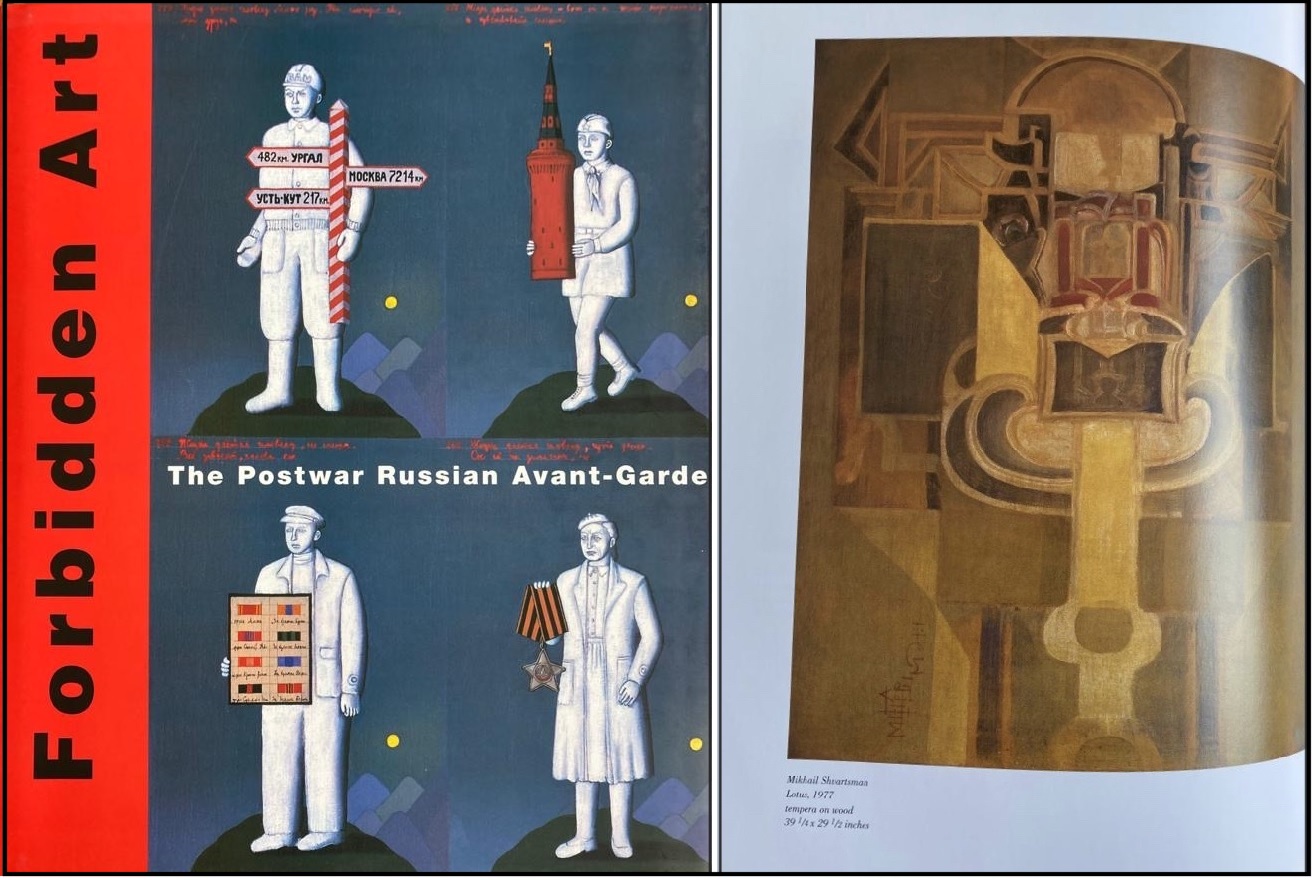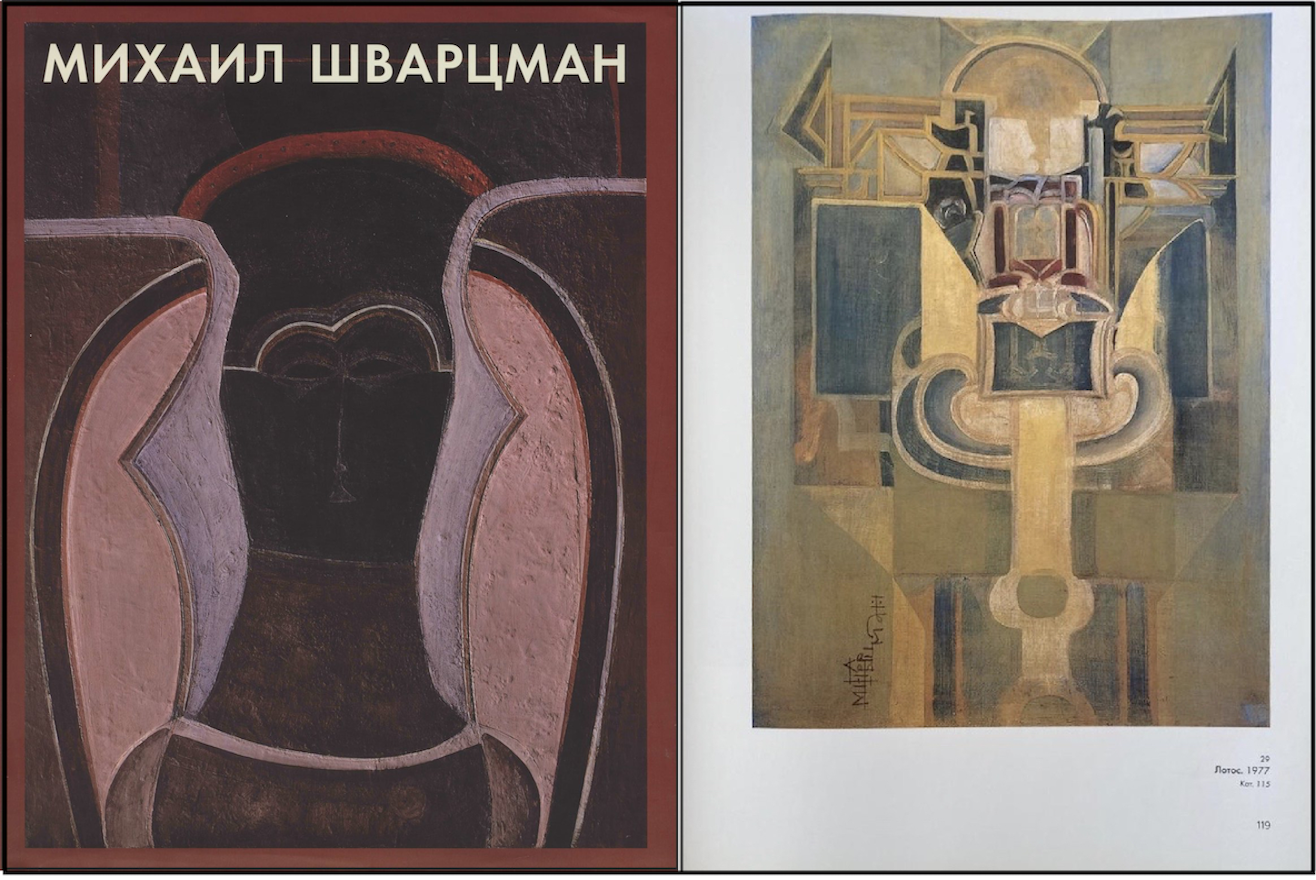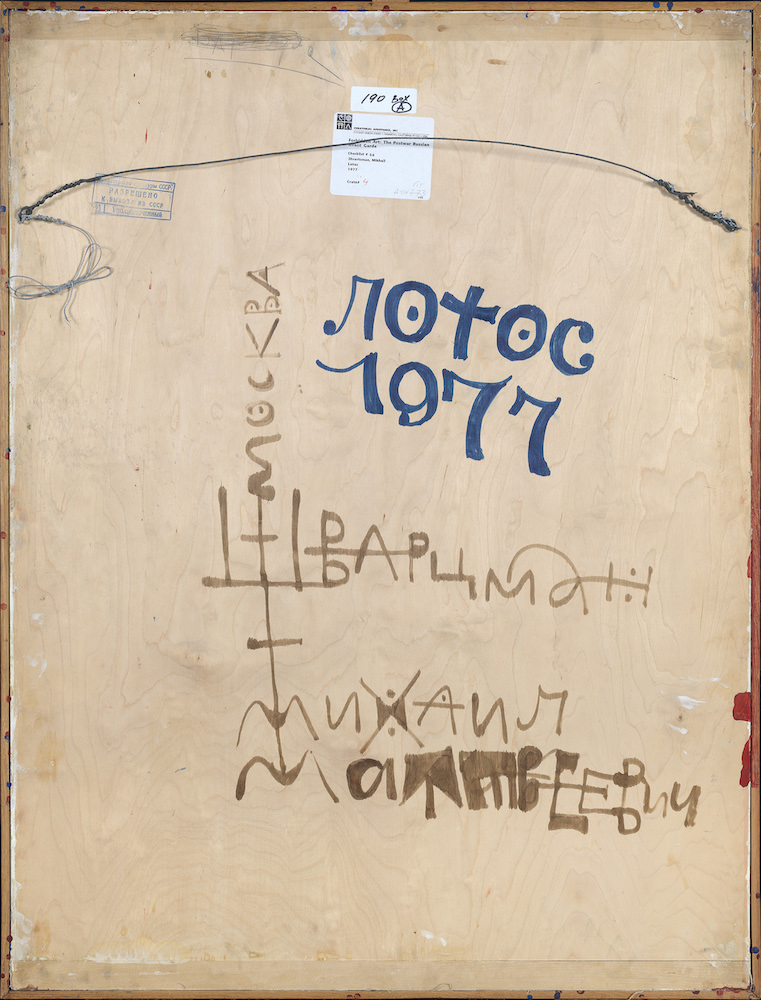Catalogue: Important Russian Art Auction
15 October 2020

* 210. SHVARTSMAN, MIKHAIL (1926–1997)
Lotus, signed, also further signed, titled and dated 1977 on the reverse.
Oil on canvas, laid on wood, 100 by 75 cm.
55,000–70,000 GBP
Provenance: Important private collection, USA.
Exhibited: Forbidden Art: The Postwar Russian Avant-Garde, itinerant: Pasadena (Art Center College of Design, Alyce de Roulet Williamson Gallery), Oxford OH (University Art Museum), St. Petersburg (The State Russian Museum), Moscow (The State Tretiakov Gallery), Chestnut Hill (McMullen Museum of Art. Boston College), Greenwich CT (Bruce Museum of Art and Science), Gainesvill FL (Samuel P. Harn Museum of Art), Lamarie WY (Art Museum, University of Wyoming), St. Peter MN (Hillstrom Museum of Art. Gustavus Adolphus college), 1998–2008.
Literature: Exhibition catalogue, Forbidden Art. The Postwar Russian Avant-Garde Artists, Distributed Art Publishers, New York, 1998, p. 28, illustrated.
I. Shvartsman, D. Gorokhov, E. Barabanov, N. Fedorova (eds), Mikhail Shvartsman, St Petersburg, Palace Editions, 2005, p. 119, illustrated; p. 377, No. 115, illustrated and listed.
Mikhail Shvartsman painted the composition Lotus in 1977, when his diaries first show entries about the concept of Shambhala, thus echoing both classical Buddhism and the esoteric teachings of Yelena Blavatskaya (Helena Blavatsky). The artist was the grand-nephew of the eminent Russian religious philosopher Lev Shestov, and he thought of his works as sign-images, as representations of the constant divine presence, calling them “hieratures” (from the ancient Greek hieros – “sacred” or “symbolic”).
The concept of “hieratic art” began to take shape. Shvartsman regarded messianism as the purpose of his art and saw his creations as embodiments of the sacred principle. He structured his hieratures as a layering of numerous organomorphic and mechanistically abstract forms and figures, all interacting with each other. The painter took the view that, as they developed into a complex colour and plastic structure, these compositions were imbued with intellectual and spiritual semantic contexts by alluding, primarily, to icon painting, both by their names in conjunction with the levkas and tempera technique, and by their expression of images and symbols of the other world that were sacred to the artist.
Shvartsman called this fusion and growth of some forms into others a change of metamorphosis, a succession that is as inevitable as that of the generations. And since he was the “hierat”, he saw it as his destiny to explore and glorify the Divine creation through his art.
The present lot as illustrated in the Exhibition catalogue
The present lot as illustrated in the monograph
Verso of the present lot



Notes on symbols:
* Indicates 5% Import Duty Charge applies.
Ω Indicates 20% Import Duty Charge applies.
§ Indicates Artist's Resale Right applies.
† Indicates Standard VAT scheme applies, and the rate of 20% VAT will be charged on both hammer price and premium.